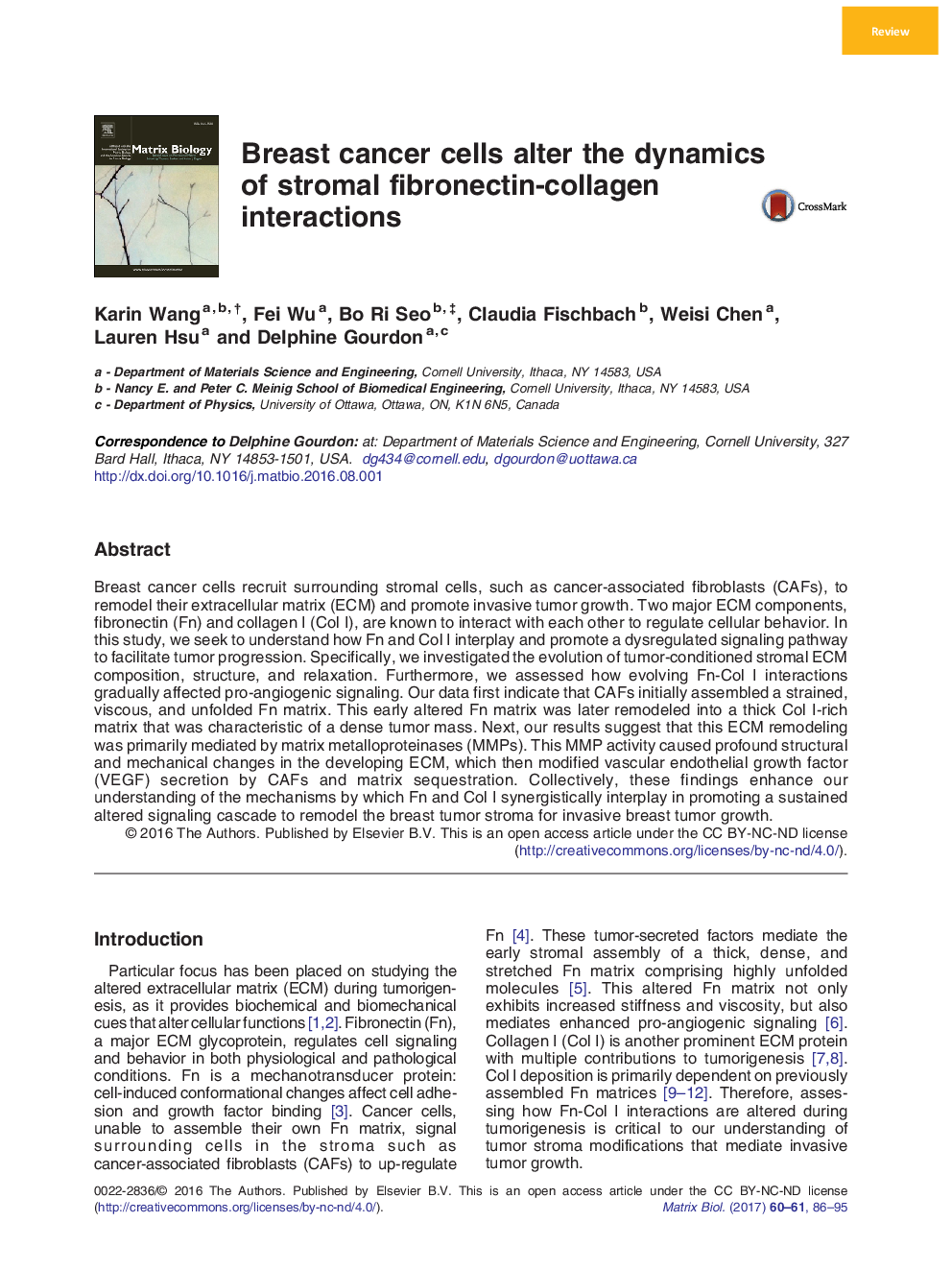| Article ID | Journal | Published Year | Pages | File Type |
|---|---|---|---|---|
| 5528565 | Matrix Biology | 2017 | 10 Pages |
â¢Breast cancer cells recruit stromal cells to alter ECM remodeling.â¢Tumor-associated fibronectin matrix is remodeled into a thick Col I-rich matrix.â¢Tumor-associated MMP activity leads to structural and mechanical ECM alterations.â¢Tumor-mediated alterations of the ECM dysregulate its proangiogenic activity.â¢Fibronectin and collagen I cooperate to promote breast tumorigenesis.
Breast cancer cells recruit surrounding stromal cells, such as cancer-associated fibroblasts (CAFs), to remodel their extracellular matrix (ECM) and promote invasive tumor growth. Two major ECM components, fibronectin (Fn) and collagen I (Col I), are known to interact with each other to regulate cellular behavior. In this study, we seek to understand how Fn and Col I interplay and promote a dysregulated signaling pathway to facilitate tumor progression. Specifically, we investigated the evolution of tumor-conditioned stromal ECM composition, structure, and relaxation. Furthermore, we assessed how evolving Fn-Col I interactions gradually affected pro-angiogenic signaling. Our data first indicate that CAFs initially assembled a strained, viscous, and unfolded Fn matrix. This early altered Fn matrix was later remodeled into a thick Col I-rich matrix that was characteristic of a dense tumor mass. Next, our results suggest that this ECM remodeling was primarily mediated by matrix metalloproteinases (MMPs). This MMP activity caused profound structural and mechanical changes in the developing ECM, which then modified vascular endothelial growth factor (VEGF) secretion by CAFs and matrix sequestration. Collectively, these findings enhance our understanding of the mechanisms by which Fn and Col I synergistically interplay in promoting a sustained altered signaling cascade to remodel the breast tumor stroma for invasive breast tumor growth.
